This story is part of our new Future of Gaming series, a three-site look at gaming’s most pioneering technologies, players, and makers.
If you’ve been playing games for any length of time, you probably know the feeling: a sense of awe washing over you as you encounter something you’ve never quite experienced before. Genuine innovation, a push forward that just might change games forever. Perhaps, in trying to imagine the future of games, it behooves us to look to the past, to the specific games that triggered that feeling for us once upon a time. Perhaps, in the remarkable achievements they pulled off, we can see a hint of what the games of the future will do, as they seek to continue evolving this still-young medium.
Here are 16 games that felt ahead of their time.
Death Stranding

Once upon a time, games with new ideas felt pretty commonplace. Many of them were bad ideas, or ideas that were poorly implemented, but at least designers were constantly trying out new things. Then, as design principles for shooters, open-world games, and other genres became more refined and more widely embraced, it became rarer and rarer to encounter big-budget games that really felt like they were rolling the dice on bold, untested ideas. Leave it to Hideo Kojima, though, to take just that kind of big swing with Death Stranding, an extraordinary game with ideas that I expect we’ll see other developers riffing on for years to come.
By that, I don’t mean that I think we’ll see a slew of cargo-carrying simulators, or numerous games in which you fight giant whales made of goo. I mean that I think we’ll see games that embrace Death Stranding’s asynchronous approach to cooperation, making you feel like part of a larger network of players who are all building infrastructure to help each other. Heck, even leaving a standee to revive other players in Super Mario Bros. Wonder feels like an echo of putting down a well-placed ladder or rope in Death Stranding. I’m excited to see how games of the future follow Death Stranding’s lead and explore new ways for us to build a better world, together. — Carolyn Petit, Managing Editor
Ghostbusters (1984)
David Crane’s 1984 computer game Ghostbusters is a favorite of mine, but glancing at it today, most people would be hard-pressed to find anything it does that seems particularly extraordinary. In 1984, though, the magic was obvious, thanks to its remarkable “bank account” system. Effectively an early example of the sort of video game password that saves your progress which would become ubiquitous in the NES era a few years later, it was more than the technology that made it so cool. It was the implementation.
The game starts by having you “log on” to your bank account with your name and account number, which lets you carry over the amount of money you’ve earned from one game to the next. Although the game has no online functionality whatsoever, the fact that it pretends to made taking my “account information” over to my friend’s house and accessing my bank balance on his Commodore 64 a thrill, and as the video above explains, the thinking that went into this feature is still impressive today. — CP
EarthBound

In the era of Donkey Kong Country and Chrono Trigger, EarthBound looked “dated” by the time it came out for the SNES in 1995. But its simplistic kid heroes and generic save-the-world plot were underpinned by razor-sharp satirical writing. Yes, it’s full of barf and fart jokes, but EarthBound isn’t afraid to criticize well-worn game tropes, corrupt police, or the societal harm wrought by capitalism—no small feat in an era when Nintendo was turning Mortal Kombat’s blood blue. It’s no wonder, then, that EarthBound went on to inspire a bunch of sharp, satirical pixel-art indies like Undertale and Lisa once those ‘90s kids who were wowed by it grew up and started making their own games. — Jen Glennon, Editor in Chief
Metal Gear Solid
Metal Gear Solid is a game about a guy in a skin-tight leotard and a bandana trying to stop America’s chickens from coming home to roost. The 1998 PS1 stealth action shooter blew people’s minds at the time because of its polygonal 3D graphics and sophisticated storytelling. It was one of those generational leaps in both gaming technology and storytelling that we rarely see, making you think, “Oh my god, video games will never look better than this.” They eventually did, but few have retained the status, acclaim, inventiveness, and irresistible replayability of Metal Gear Solid.
Case in point: the Psycho Mantis boss fight. It’s the stuff of legend now. Even if you weren’t there to experience it firsthand, you’ve probably heard someone recount it, like an otherworldly vision bestowed by the divine. Possibly one of the world’s strongest psychics, Psycho Mantis can break the fourth wall and read your thoughts, predicting Snake’s every movement and even hacking your PS1 memory card to comment on your save files. He can make your controller rumble and make the game act as if the TV just shut off. To defeat him, players have to move their controller from the player one slot and use the second port on the console. It’s genius.
Games are often carefully calibrated to make the player feel in control, painstakingly walking them through tutorials and designing entire levels to play by set rules that they can easily wrap their heads around. In such a world, the Psycho Mantis fight still feels like one of the more revolutionary rug pulls. It was the ‘90s equivalent of ChatGPT tricking you into thinking it could talk to you. I hope more games take its lessons to heart and learn to risk it all in the future. — Ethan Gach, Senior Reporter
Skyrim

Since The Elder Scrolls V: Skyrim launched in 2011, it has remained a beacon of gaming excellence, a ruler by which all subsequent RPGs are measured. When playing another game, we may ask: Is its world as big as north Tamriel? Is its physics model so good that it prompts wacky experimentation? Can it be shaped and remolded by modders with as much freedom? Will it lure you in with the promise of becoming a vampire or a werewolf, then keep you there for hundreds of hours with its seemingly endless supply of nooks to explore and crannies to discover? If it can’t manage all that, then it’s not as good as Skyrim. Even the highly anticipated Starfield was referred to as “Skyrim in space,” leading up to and beyond its release—and I think, a few months post-launch, we can safely say no, it’s not as good as Skyrim. — Alyssa Mercante, Senior Editor
Wibarm, Star Cruiser (Alexandra)
Back in the ‘80s, game developers innovated at a blistering rate, rapidly evolving their nascent artform at a speed that seems dazzling today. So it was that Japan’s technically ambitious Arsys Software delivered Wibarm in August 1986, an eclectic PC-88 adventure that has a reasonable claim to being the world’s first polygonal RPG.
You explore Wibarm’s large, 2D, side-scrolling levels as a mech (guess its name) that can transform into jet- or tank-like vehicles. Enter a building and your perspective suddenly changes—whoa!—to a real-time 3D, smoothly animated, behind-the-back view. Wibarm’s large, nonlinear-feeling levels dotted with true 3D mazes are an early precursor to fully open-world 3D RPGs like The Elder Scrolls: Arena almost a decade later. Not bad for 1986.
Not content to rest on its achievements, Arsys went all the way exactly two years later, releasing the entirely polygonal first-person action-RPG Star Cruiser. Its 30-odd explorable planets each featured real-time 3D towns and dungeons with space flight sequences in between. In 1990 NCS ported it to the Mega Drive. Starfield on your Sega Genesis? You bet. — Alexandra Hall, Senior Editor
Ultima Underworld
Skyrim has already been recognized here, so now let’s turn back the clock and acknowledge the game that brought about the advent of real-time, first-person exploration as we know it today. Sure, the ‘80s saw amazing first-person role-playing games like Wizardry, The Bard’s Tale, Alternate Reality, Dungeon Master, and others, all of which deserve recognition. But these games all had you hop from node to node rather than moving freely in a 3D environment, and most of them had turn-based combat. When Ultima Underworld came along in 1992, its free movement and real-time battles made you feel rooted in dank dungeons like no game before.
Ultima Underworld’s impact on games is undeniable. Developer Blue Sky Productions would soon become Looking Glass, and the technology and design principles the studio developed on this groundbreaking RPG would also be fundamental to some of its later games, including the influential System Shock and its sequel. Immersive sims and many role-playing games owe a huge debt to Underworld, one of the first to really conjure the “you are there” feeling that so many games are still chasing and iterating on today. — CP
Baldur’s Gate 3
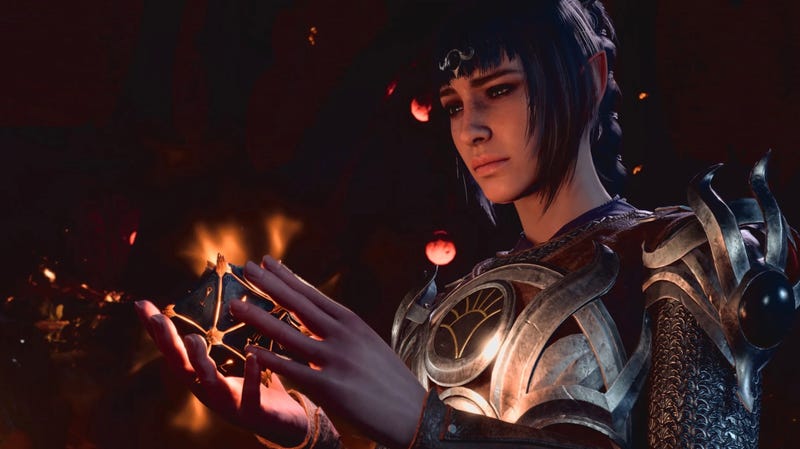
Baldur’s Gate 3 is one of the most recent games we’re talking about here, so you can pretty much call this a prediction for how it will likely influence RPGs in the future. Larian Studios released the third entry in the Dungeons & Dragons RPG series at exactly the right time. Tabletop RPGs are at a fever pitch in popularity, fans are craving an RPG of this style with BioWare’s output in a state of limbo, and the fandom is going nuts for its colorful cast of tadpole-infected weirdos. But more than anything else, it is one of the most reactive RPG experiences anyone has put out on this scale.
Baldur’s Gate 3 exists somewhere between tactical RPG and immersive sim, and has what feels like an endless amount of opportunities for player expression and role-playing, all of which the game accommodates for. There were a lot of factors that allowed Larian to put the time and effort into creating such an open-ended game, and because the rest of the industry is so broken, we might not see another like it for a long time. But until we do, a lot of other games are going to feel pretty hollow in comparison. — Kenneth Shepard, Staff Writer
Mirror’s Edge
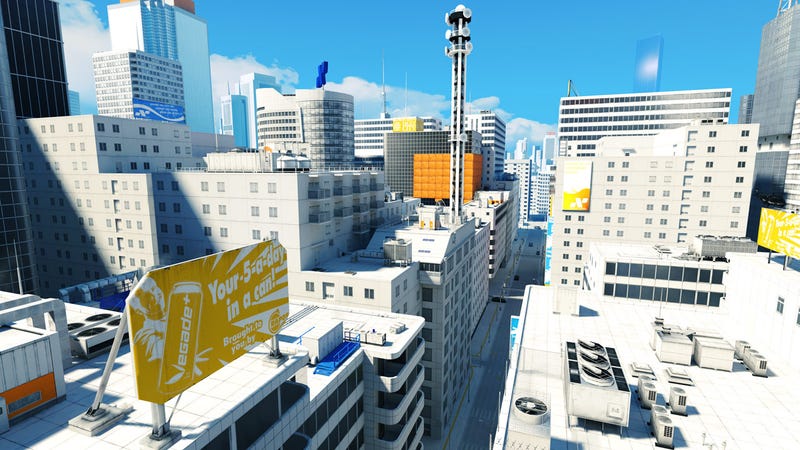
First-person parkour games are a rare breed. Every now and then, you’ll get one featuring stylish traversal mechanics such as Dishonored or Ghostrunner, but DICE’s 2008 action-adventure platformer Mirror’s Edge feels like the advent of it all.
This trial-and-error jump-a-thon set in a superficially bright city of the future was well ahead of its time, with intricate level design that pushed your dexterity and precision. You could jump off and run along walls, slide under and dive over obstacles, catapult from certain ledges and platforms, and zip-line across skyscraping buildings, all in an attempt to complete challenges as fast as possible. The first-person perspective and velocity of motion provided an unparalleled sense of exhilaration and freedom. If you ask me, we could use way more first-person parkour games. Let’s make it happen. — Levi Winslow, Staff Writer
Portal

Portal is a perfect cocktail of game design: equal parts genre-redefining physics and an unforgettably dastardly villain, with a few dashes of brilliantly balanced difficulty, all shaken up and poured out into a beautifully etched glass like the ones you get at a hip, expensive NYC bar. Its concept: you’re trapped in a facility run by a maniacal robot and must use a gun that shoots portals to escape its labyrinthine halls.
With such a groundbreaking set of physics on display, Portal smartly starts you off slowly, giving you ample opportunity to sort out just how to link its portals together to traverse rooms. But by the time you reach its ending, the difficulty ramps up, requiring you to consider momentum and turrets and more while trying to escape. And as the story unfolds and you get more ensnared in it, you’ll feel that slight pulse of anxiety as you try to solve its puzzles, as you know what will happen if you don’t. There are very few games that play this well and present such a clear-minded thesis that it follows from start to finish. — AM
Grand Theft Auto III
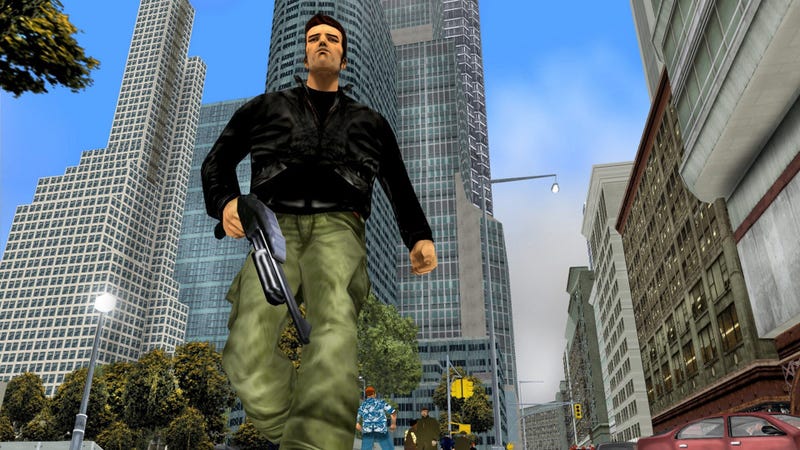
Rockstar’s early Grand Theft Auto games were top-down, arcade-inspired affairs. But in 2001, the third installment of the series let would-be criminals actually take to the street, in one of gaming’s first fully realized 3D urban environments. GTA III’s Liberty City flung open the Pandora’s box of open-world game design, integrated licensed music, and eagerly courted controversy with its depictions of violence and sex. Arguably the first game to truly capture the feeling of an interactive action movie, GTA III spawned countless “sandbox” imitators, including Saints Row, Mafia, and Watch Dogs. — JG
Fortnite
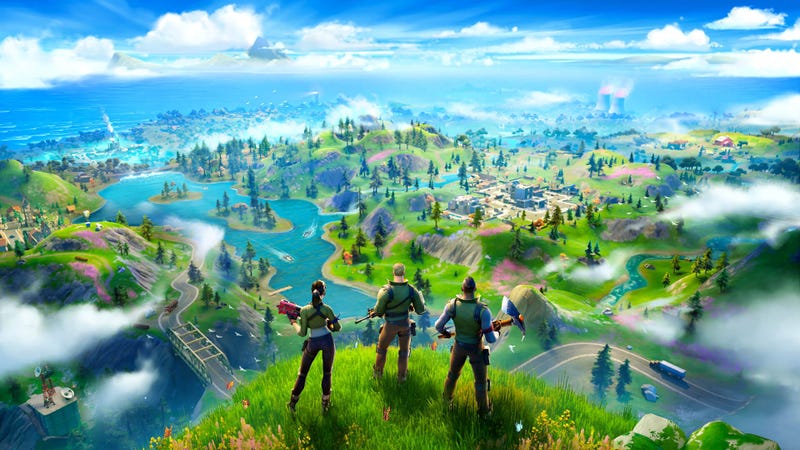
I like worlds that feel alive, and by that, I mean worlds where you feel the passage of time, which takes its toll in ways that are both gradual and sudden. Both small and cataclysmic. No game I’ve ever played understood this the way Fortnite did. Back in its first chapter, I’d leap onto the island and thrill at tiny little ways that things had shifted from the week before. Trees being cut down. Furniture shifting in a basement. Something, where before there had been nothing. It felt like life was happening here.
I suppose the “innovation” that Fortnite gets the most attention for is figuring out how to become a colossal corporate crossover wonderland, a virtual theme park in which characters from the hottest movies, video games, and anime all shoot at each other while pop stars put on concerts. I’m sure there’s good money in that, but it’s not what excited me about the game. I miss the days when it felt like its own world, someplace original and distinctive, and, especially, alive, in ways big and small. That’s what I want to see more of in the games of the future. — CP
Final Fantasy VII
Even if you’ve never played the original or the 2020 remake, any game-liker of a certain vintage knows the introductory sequence to FF7. A young woman walks with a basket of flowers, and suddenly the camera pulls sharply skyward, revealing a sprawling mechanical metropolis gleaming with eerie lime-green vapor. Even if people goof on the polygonal block-monster character models now, the 1997 PS1 game was a dramatic visual leap forward from Final Fantasy’s stint on the Super Nintendo. Looks aside, its narrative ambition and memorable characters are the reason its legacy endures to this day. The adventures of Cloud Strife elevated role-playing games from niche to mainstream in the West—and contributed to a broader ‘90s fascination with Japanese pop culture that endures to this day. — JG
Portopia Serial Murder Case
Well before Yuji Horii was “the Dragon Quest guy,” he was the creator of this wildly influential 1983 detective game. Like the early ‘80s text adventures from Sierra Online, Portopia helped pave the way for narratively ambitious adventure games. The game features first-person graphics, nonlinear gameplay, an open world, and branching dialogue choices. The Famicom version also included one of the earliest uses of the point-and-click command menu. All of these things are commonplace now, but that wasn’t the case at the time.
Portopia was never officially released in the West until April 2023 (as a reimagined “AI tech preview” from Square Enix, womp womp). Even so, its influence is everywhere in modern gaming. In a 2005 interview with GameSpot, Metal Gear and Death Stranding creator Hideo Kojima cited Portopia and Super Mario Bros. as the two games that inspired him to pursue a career in the industry. “My encountering this game expanded the potential of video games in my mind,” he said of Portopia. — JG
Titanfall
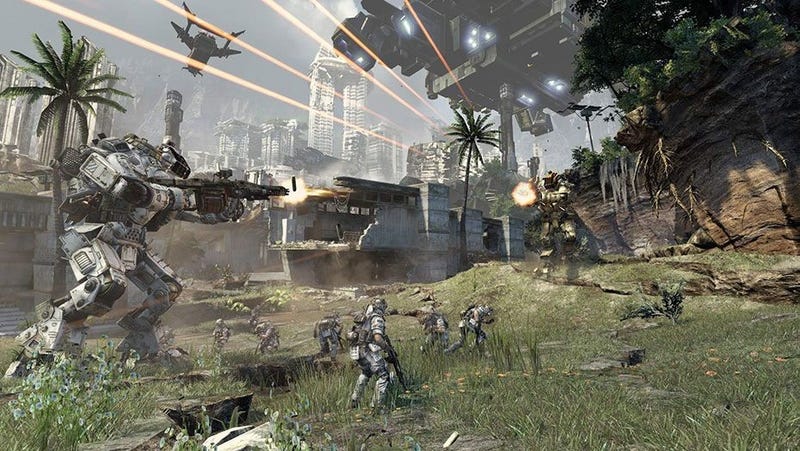
Mech combat games, like Mechwarrior and Armored Core, existed long before Respawn Entertainment jumped into the fray. But there weren’t many games that let you switch between on-the-ground firefights with soldiers and in-the-cockpit bouts with gigantic mechanoids. Titanfall was that game, bringing the fantasy of the Gundam anime to the grittiness of a Call of Duty setting, creating something wholly unique for its time.
There were some questionable decisions here, including a complete lack of any real storytelling and an online-only solo mode, but the package itself was hugely innovative, and Respawn further iterated on it with Titanfall 2, which featured an excellent single-player campaign with one of the best missions in games ever. I’m bummed we’ll probably never get another Titanfall, but its metal-plated fingers can been seen in many other first-person parkour and shooter games. So, I take comfort knowing that we will, ideally, never forget what Titanfall has done. — LW
Doom
So momentous was Doom’s impact that PC gaming itself can be rather cleanly divided into two eras: before Doom, and after it. id Software’s December ‘93 atom bomb of a first-person shooter plunged players into a viscerally realistic, 3D-feeling world the likes of which we’d never known. And as with PC gaming itself, many of us felt changed forever.
Doom outright innovated many concepts and popularized some existing ones. Among these were non-orthogonal texture-mapped walls, varying floor and ceiling heights, distance-based light diminishing, competitive and cooperative play via either modem or IPX networking, an optional three-screen mode(!), unprecedented openness to player modding, an innovative shareware distribution method, and extremely responsive, simultaneous mouse/keyboard controls. As a seasoned player of the totally flat Wolfenstein 3D, I remember a pre-release Doom screenshot that showed a multi-tiered room leaving me in awe that such a realistic, 3D space could be rendered in a video game.
It wasn’t just a looker. Doom’s action was exciting, scary, and fast as hell, with terrific gamefeel and weapon/monster balance amid moody, evocative mazes that seared themselves into players’ memories. The core action gameplay is literally perfect, as satisfying a shooter as has ever been crafted. (1994’s Doom II built onto that rock-solid base with some additional, appreciated variety.) That id Software got so much, so right here feels miraculous.
Doom required a fairly hefty PC to run at its maximum 35 frames per second, becoming perhaps the early example of a PC game driving players’ hardware upgrades. It makes sense, though, as everyone wanted to plumb the dark depths of this artifact from the future for themselves. — AH
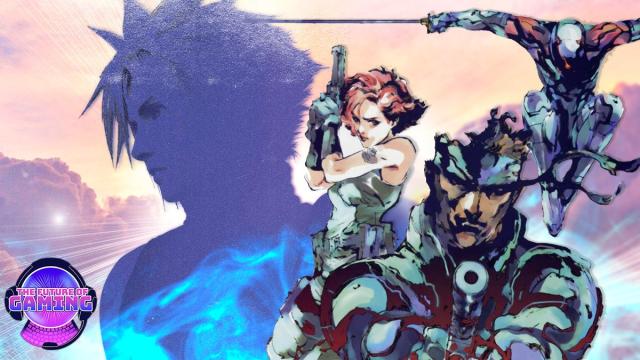
Leave a Reply